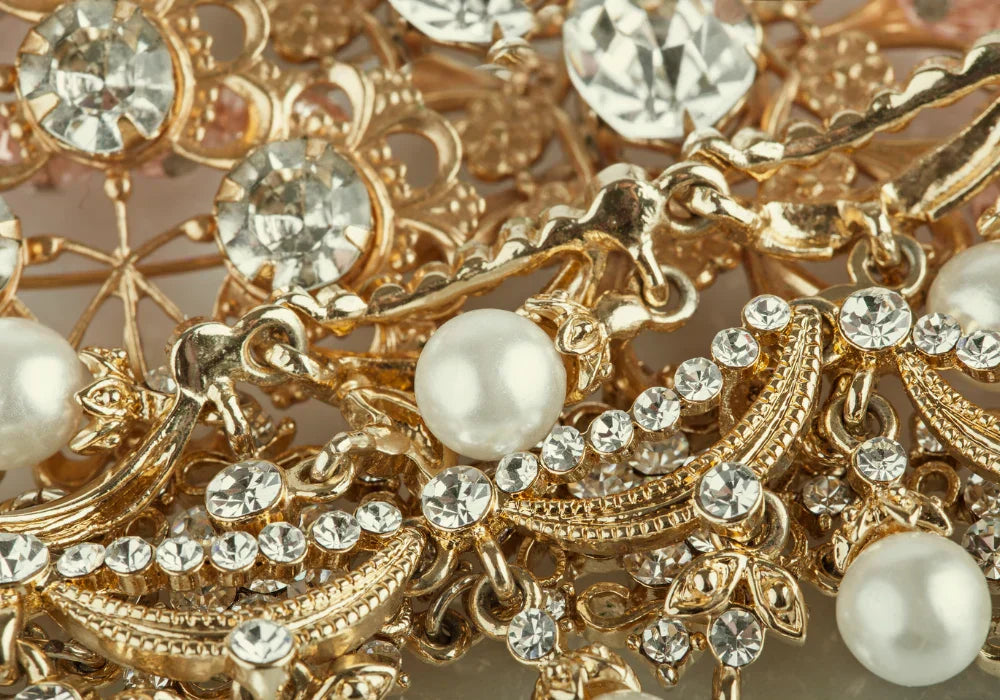
The Truth About Jewelry Materials: What’s Really in Your Accessories?
Jewelry is more than just an accessory - it’s a statement, a mood, and sometimes even a treasured keepsake. But have you ever had a favorite piece leave dark or green stains on your skin, cause irritation, or lose its shine too quickly? The quality of the metals used plays a big role in how your jewelry looks, feels, and lasts. Choosing tarnish-free jewelry, waterproof jewelry, and hypoallergenic jewelry can make all the difference.
So what’s inside lower-quality jewelry then?
Many low priced jewelry pieces are made using base metals that might look beautiful at first, but can have some hidden downsides. Here are a few metals commonly found in lower-quality jewelry and their effects:
- Nickel – A major cause of skin allergies, especially for those with sensitive skin, like myself. In the past I used to experience redness, itching, and even rashes from my jewelry! This is why I used to wear only (coated) silver for a long time - until I discovered high-quality hypoallergenic and nickel-free jewelry, which I now wear totally worry-free :)
- Lead – A toxic metal that should be avoided, especially in jewelry for children. Long-term exposure can have serious health effects, making lead-free jewelry a must!
- Cadmium – Used to strengthen soft metals but is highly toxic. It has been restricted in some countries due to its harmful effects, reinforcing the importance of toxin-free jewelry.
- Copper & Brass – While not inherently toxic, they can cause green stains on your skin due to oxidation, especially when exposed to sweat or moisture.
Why does lower-quality jewelry tarnish & discolor?
Ever noticed a ring turning your finger green or a necklace losing its shine? This happens due to:
- Oxidation – Some metals react with oxygen, moisture, or even your skin’s natural oils, leading to tarnishing or discoloration.
- Low-Quality Plating – Thin layers of gold or silver plating wear off quickly, exposing the base metal underneath. Investing in tarnish-proof jewelry ensures your pieces stay beautiful longer.
- Exposure to Water & Sweat – Moisture speeds up oxidation and can break down the coating of plated jewelry. High-quality waterproof jewelry is designed to withstand these elements.
The Belle & Bold Standard: affordable jewelry that lasts
At Belle & Bold, we believe high-quality jewelry does not have to be overpriced. That’s why our collection consists of fair priced jewelry pieces (no 10x markups!) that are mostly made from premium-quality, hypoallergenic materials.
✔ Stainless Steel & Titanium – Strong, resistant to scratches, and perfect for sensitive skin.
✔ PVD real 18K Gold Coating – The highest quality plating method, ensuring gold jewelry that won’t fade and remains vibrant for the years to come, if not a lifetime!
✔ Lead-Free & Nickel-Free Materials – this makes our jewelry hypoallergenic and you can wear it worry-free.
✔ Waterproof & Sweat-Proof Jewelry – Perfect for everyday wear, even at the gym or the beach.
But what if you find a stunning piece that’s made from brass or copper?
Let’s be honest - sometimes, you come across an absolutely breathtaking piece that isn’t available in premium materials. If you do choose to wear copper of brass jewelry, try to make sure they don’t contain lead or nickel and take good care of them. Here are some tips to keep them looking fresh:
✨ Keep them dry – Avoid contact with water, sweat, and perfumes.
✨ Store them properly – Use a soft pouch or jewelry box to prevent oxidation.
✨ Consider applying a clear coat – A layer of clear nail polish can act as a barrier to reduce tarnishing.
✨ Rotate your jewelry – Give your pieces a break to extend their lifespan.
Final thoughts
Jewelry should empower you, not cause irritation or lose its beauty too soon. By choosing high-quality jewelry, you invest in pieces that last longer and feel great to wear. But if you ever fall in love with a special piece that isn’t made from premium materials, a little extra care can go a long way.


